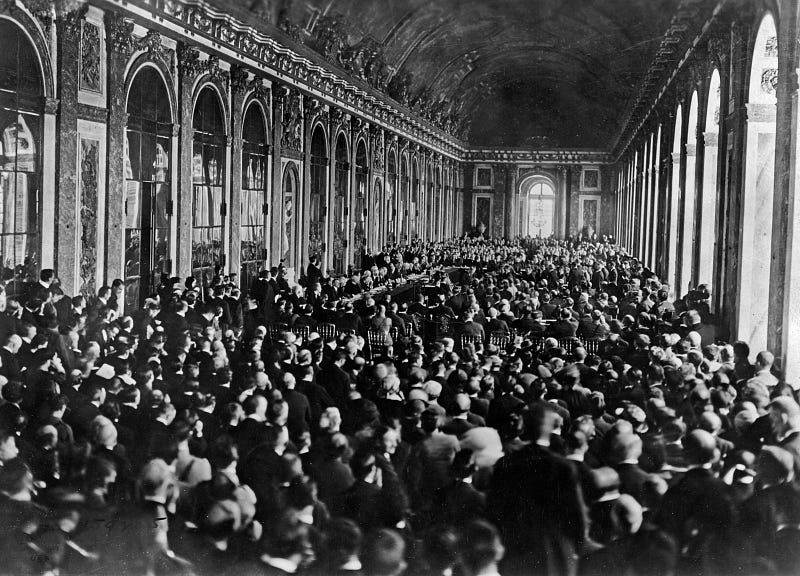 hether because of war debts or the aftermath of post-war reparations, governments have historically faced financial obligations that have been paid off for decades or even centuries. Here are six of the debts of states that have been paid over many years. In some cases, these debts have been left off or simply forgotten. However, in other cases, there are lawsuits that have been going on for decades.
hether because of war debts or the aftermath of post-war reparations, governments have historically faced financial obligations that have been paid off for decades or even centuries. Here are six of the debts of states that have been paid over many years. In some cases, these debts have been left off or simply forgotten. However, in other cases, there are lawsuits that have been going on for decades.
Experts within the history field say that debtors and creditors have been around for 5000 years. The oldest text that is known of which describes debt is the code of Hammurabi which is nearly 4000 years old and states:
“The creditor may not take barley from the debtor’s house without his consent. “
In more agrarian societies, debt was seen as the first source of slavery. People were taking debts so serious that once they have lost everything and still owed that person, they would take their rights and use them for forced labor “until their debt was paid off”.
Debt played a much bigger role in our history, and it does show in our present society that not many people have seen this side of history, as they themselves end up homeless because of debt. No matter if we are talking about a physical person or a whole nation, debt will always have devastating outcomes for those in debt.
The naval debts of the Dutch

Some of the oldest debts date back to the 17th century and were created by the Hoogheemraadschap van de Lekdijk Bovendams (yes that is a real name), a Dutch naval authority responsible for maintaining water levels. The first bill was issued to raise funds that would have helped repair a dam they managed. Another bill from 1648 is printed on goatskin and was created to help build the pillars on the Lek River. Yale University offered $25,000 to buy the 1,648 bills that were originally worth more than $500. The university bought the 368-year-old bills for their historical value. As no maturity date has been set, the debt is still unpaid.
Britain’s 4% Consols
In 2014, the British government announced its plan to pay off part of the debt dating back to the 18th century. The debt existed in the form of a perpetual obligation obtained from the “4% Loan” that Prime Minister Stanley Baldwin issued in 1927 to refinance national loans during the First World War. But this “4%” included much more than the debts of the First World War.

Thanks to decades of government and refinancing, loans from Napoleon’s time and the Crimean War were added to the original bills. A loan from 1847 helped Ireland during the Famine, another significant amount of money was used to compensate slave owners when the UK Slavery Abolition Act was issued. One of the oldest debts was created during a plan to save the economy that was preceded by the South Sea Bubble, the financial collapse of 1720.
Pension during the Civil War
The American Civil War ended in 1865, but a century and a half after the event, a woman from the United States still receives a government pension for her father’s service in the Union Army. Irene Triplett is the daughter of Private Mose Triplett, a North Carolina farmer who started the war as a young Confederate soldier before changing sides and joining the Kirk’s Raider’s Union.

Triplett survived the war and later married a woman 50 years his junior. The man was 83 years old when his daughter was born, but he died a few years later. Now, 86-year-old Irene Triplett receives a $73 pension each month for her father’s service during the Civil War. The woman is the last living child of a Civil War soldier.
Germany’s debt during the First World War
The Treaty of Versailles of 1919 ended the First World War, but it also marked the beginning of war reparations that required huge sums from Germany. As part of a “Guilt Clause” under the peace treaty, Germany was declared responsible for the conflict and was forced to compensate allied countries with 132 billion gold marks, the equivalent of $400 billion (without accounting for inflation).

The Germans were forced to print money to pay off the debt. In 1950, West Germany decided to continue paying its pre-World War II obligations. They were paid in 2010, 91 years after the Treaty of Versailles.
Haiti’s debt of Independence
In 1791, African slaves on the Caribbean island of Saint Domingue began a bloody revolt against their masters. The rebellion culminated in 1804 with the founding of the Republic of Haiti, but everything came at a price. The United States and all European countries refused to officially recognize Haiti, and in 1825 the French sent warships to Haiti. The Haitian government agreed to pay France a compensation of 90 million gold francs.

The amount was five times higher than the country’s annual income, and the inhabitants failed to pay it in full until 1947, about 120 years after its issuance. Activists and politicians have campaigned for France to return the money it received from the Haitian government. Adjusted for inflation this would now be worth around $20 billion.
Avid Writer with invaluable knowledge of Humanity!
Upcoming historian with over 30 million views online.
“You make your own life.”





